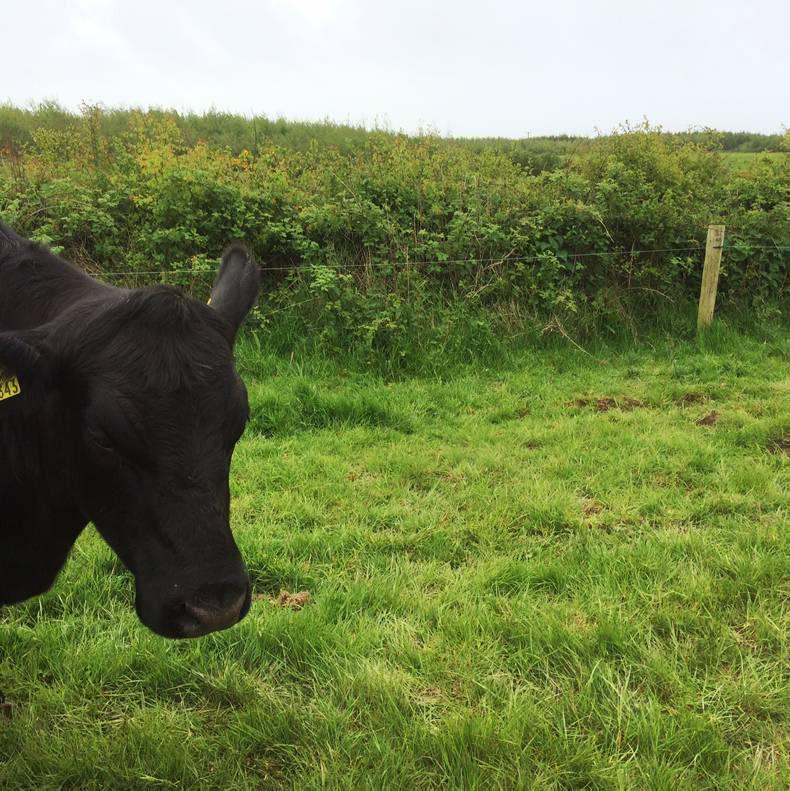May is a great time in the hedgerows. The main plant is the May bush, sceach ban or whitethorn. It gives early nectar for bees and creates blankets of white flowers to frame our greening pastures with splashes of added gold from the furze or gorse. Yes, it’s all green, white and gold on the farm these days – miles and miles of it.
In my area, the old hedges were planted on banks of clay, hand dug from the deep drain, gripe or trench that runs beside. Strangers are often mystified that we call the bank a ditch - we like confusing and amusing strangers.
Our hedges are trained into weird and wonderful shapes by the southwesterlies that blow over Bannow Bay. As a young lad, running home in the half-dark, my imagination was frightened by the hunch-back figures looming in the hedges. On arriving breathless and bedraggled at the destination house, someone might say: “You’re like a yoke pulled through a hedge back ways!”
Hedging my bets
To be honest, I have had two minds about hedges. The mind I had when I was younger said: “They take up too much land and cost money to maintain and we have too much of them,” so I set about removing lots of them. The Department had the same mind, so they funded it by a drainage grant. They would happily have funded the removal of every hedge on the farm if the seeds of my present mind hadn’t already been germinating.
Happily, I only removed less than half. My present mind has more appreciation for their value for shelter and for the birds and bees I like to share the farm with. I am now far more focused on renewing and enhancing rather than removal.
A useful app
Last year, I downloaded a brilliant app for my iPad. It is called Planimeter. It enables me to sit in my kitchen on a wet day and measure the lengths of every hedge and fence with total precision. A few days ago, I used it to step out my hedgerows, the ones I removed with my young mind, the ones I retained and the ones I have planted recently.
The figures are amazing. It turns out that when I took over the farm from my Dad, there was 7.7km of hedge on this 40ha farm. My young mind, with Department support, removed 2.7km, which still leaves me with 5kms of hedgerow to manage. They require work to keep them vigorous and stock-proof and effective for shelter and biodiversity.
I have two minds, too, about coppicing, though. Coppicing is where the hedge is cut right to the ground (photo below). This certainly results in new shoots and a thicker butt, although much is lost in the process. As well as shelter and whitethorn nectar for bees, old hedges have lots of ivy with berries, which some birds rely on for the winter.

I have found that after coppicing, the whitethorns take years to flower again and decades for ivy to return. I strongly feel that coppicing too much at the one time is not something that should be supported. Certainly not in coastal areas like mine, where shelter is so hard to grow.
Hedge funds
Under AEOS, I was delighted to get funds to put back just 200m of new hedge. I was very much looking forward to GLAS helping me to plant more, but someone in the Department decided otherwise. Sadly, GLAS II saw the removal of the hedge-planting option altogether.
I find it really hard to understand this. Suggested reasons included “not enough plants” – which the nurseries dispute, and “we don’t need additional new hedges” – which I dispute. Reluctantly, I applied for GLAS II, but I selected more coppicing than I am happy about. So now I am in two minds again.
With GLAS III recently announced, I am really hoping that new hedge-planting will be back on the menu and that I will be allowed to switch. After all, the Department encouraged and funded me to remove 2.7km of hedges, so I am really hoping they will now support me to replant just a couple of hundred metres.
Down here, we need all the shelter and biodiversity we can get. In the year that’s in it, we all need more green, white and gold on our farms, don’t we?






 This is a subscriber-only article
This is a subscriber-only article














SHARING OPTIONS: